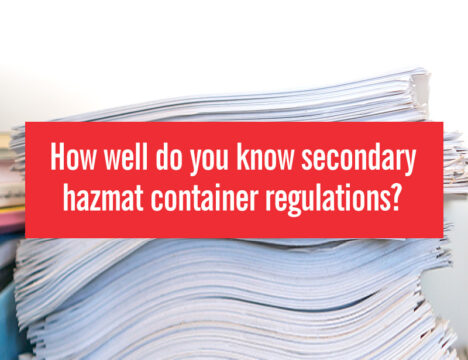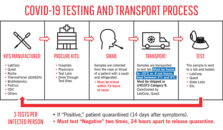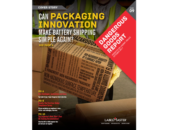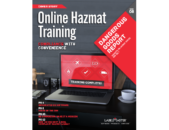Secondary hazmat containment used to mean one thing: paint cans. But now, shippers are switching to new Capsuloc™—the screw-top secondary container that’s lighter weight, more durable and easier to use than paint cans, now with a special permit (DOT-SP 21488) and accepted as exemption by UPS and FedEx. How well do you know the regulations…
What COVID-19 test sites must know about shipping infectious substances
For complete guidelines and resources for transporting COVID-19 test samples, please visit our coronavirus shipping guidelines page. With new COVID-19 test sites setting up all over the United States and the world, many businesses and their employees will be transporting infectious substances for the first time. These shippers must be aware of two important topics:…
Virtual hazmat training: interactive, customized and ideal for these times
While you’re coping with the COVID-19 pandemic, there are many things you can put off until life gets back to normal. Hazmat training, however, is probably not one of them. If your—or your team’s—certifications are coming due, you have to renew your training, or you risk fines for non-compliance. (Expired or incomplete training certifications are…
Hazmat hopes 2020: If Dangerous Goods professionals ran the world
Every fall, we invite everyone who attends the Dangerous Goods Symposium (and lots of other hazmat pros) to answer one simple question: If you could wish for one thing in the entire Dangerous Goods galaxy, what would it be? Now, for the third straight year, we’ve compiled those answers to kick off our year with…
How to get strategic about hazmat packaging efficiency
If you’re an e-commerce customer—and who isn’t these days?—you’ve probably had the experience of receiving a small item in a large package and wondering, Was this really the most efficient way to ship this thing? As a supply chain professional, however, you know the answer probably isn’t that simple. Packaging efficiency in today’s decentralized omnichannel…
Dangerous Goods Symposium 2018 workshop: “Authoring Closure Instructions”
Howard Z. Skolnik and W. Dean Ricker—chairman and president, respectively, of Skolnik Industries—will lead a workshop on “Authoring Closure Instructions” during the 13th annual Dangerous Goods Symposium, September 5–7, 2018, in Rosemont, Illinois. “The 49 CFR says every package with a UN certification must have closure instructions to give shippers a way to complete a…
Dangerous Goods Report | Vol. 9
Summary: Volume 9 of the Dangerous Goods Report looks at an innovation that may change how we transport lithium batteries and battery devices, despite all the safety and regulatory hurdles involved. We also assess the unique challenges facing seven industries that ship Dangerous Goods, and review the eye-opening findings of our first-ever international DG compliance…
Dangerous Goods Report | Vol. 8
Summary: DG Training Online—Compliance with Convenience. Dangerous Goods trainers embrace interactive online training as a stress-reducing solution. Integrated DG Software = Streamlined Compliance. Why more of today’s hazmat shippers are integrating DG software with their ERPs. State of the Ion. A snapshot of current lithium battery shipping regulations, and the packaging breakthrough that may make battery shipping less…
Dangerous Goods Report | Vol. 7
Summary: HM-215: Are you ready for the border patrol? If you ship Dangerous Goods, don’t let new border measurement regulations for labels and placards catch you unprepared. Ship damaged batteries in a fiberboard box? Yes, you can! Just in time for the largest cell phone recall ever—new Special Permit Packaging makes reverse logistics easier and…
Dangerous Goods Report | Vol. 6
Summary: The Elements of Compliant Packaging: Why hazmat packaging comes in so many different forms, configurations and sizes. Infographic: Your Guide to Retail Reverse Logistics, or, “How to Keep Returns from Coming Back to Haunt You” It’s July 2016. Do you know where your hazcom compliance stands? Every workplace in the US should now—in theory,…









